“The Fight Changes the Taste of Meat” is an exhibition at the IOMO gallery, curated by Horațiu Lipot, which brings together metamorphosing “fights” rendered in wood by sculptor Mircea Roman. It can be seen until October 11.
The largest work, Jacob’s Struggle with the Angel. Jacob sits on the angel’s headless body, possibly with bleeding wounds all over his body – red paint on the edge of the wooden panels. On the other side, the angel’s reddish and threatening wings appear to start from its square mouth, located next to Jacob’s missing head. Clearly not the friendliest angel. The angelic body is composed of slats, of different sizes depending on where they are placed, which accentuate the volume where necessary, stapled with a pressure gun, between which there is colored sawdust.
The sculpture has several origins: Jacob and the Angel by Jacob Epstein, two chubby figures in red alabaster that the artist saw at the Tate during his stay in London, and a tree root that inspired the current form of the work, found in one of the camps in Tescani, also on display in the exhibition. The chunk of tree solved the problem the artist had in associating it with another figure that would resemble a wall. Jacob and the Angel is part of a series of biblical pairs that Mircea Roman created: Adam and Eve, Pietà, Abel and Cain. The latter work is itself a progenitor of the current sculpture: two figures with a confusing shape, one of them present only through a leg in the same posture as one of Jacob’s legs, stretched and slightly tense, piercing the base of the prism that contains a mouth-abyss like the Angel. The “mouth” is a leitmotif in Roman’s sculpture, an idea that has been repeated since the 1980s, from a self-portrait named after the artist’s birthday – the man empty inside.
“A large volume with no particular side, I built slowly, very slowly, starting from the inside, from the structure, and working my way outwards. At every step, I had to pay attention to proportion and strength until I built the large volume. Jacob is made of pieces of wood, as I usually work. For Angel, I made the structure, then covered it with plywood, and then I came back with these sticks and reinforcements, which is more abstract, but unfortunately, you can’t see it now,” explains the sculptor. On a surface on the “mouth” side, there is a chalk sketch of a blossoming apple tree. The sketch would have turned into a painting, but it remained an unfinished element, preserved for exhibition.
Jacob is an older character in Roman’s iconography. He is present in another sculpture that the gallery exhibits outside the show, with a fragment from Jacob’s Ladder, in which one of the characters is about to fall off the ladder. His head is screaming.
The rest of the exhibition features two timeless themes: trophies and portraits.
A group of crooked trophies that would hang “like on a fence” if they weren’t already on the fence. The tree trunks are covered with pieces of wood carefully sprayed with paint in a way that leaves room for different associations. The essences are different: cherry, wicker, willow. The trophies speak of deforestation, the trees are felled with the same appetite with which game is caught. They refer to the artist’s childhood memories in the Lăpuș region, where trucks carrying wood used to pass by. “The first paved road was not to Baia Mare, the county capital, but to Gâlgău, where there was a train station and where the periodic trains carrying tree trunks used to go,” recalls Mircea Roman. Among the trophies, the most important and largest is the Hollow Trophy, a log built on the inside and outside, placed horizontally, hollow and dark inside, like a kind of “abyss,” a reminder of a trophy the artist received for the best sculpture at the 1993 Osaka Triennial, an award that brought him recognition and commissions at the time, but which now reminds no one of anything. The Hollow Trophy speaks of the questioning in the eyes of others of a recognition received long ago. “What seemed extraordinary then is now meaningless, hollow,” says the sculptor.
A final work is Tattoo, a large portrait of the sculptor’s wife, painter Florentina Voichi. The work is composed of slats, with bumps like in Jacob and the Angel. The bumps appear “because time comes and leaves its mark on us. It tattoos us. Wrinkles… we work on them. We fight to get rid of them,” adds Mircea Roman. As with the first sculpture, Tattoo is composed of slats with sawdust in between, the color scheme is limited but uneven: skin, hair, eyes. “I left the eyes rougher, working with a chainsaw, and slowly I sank into them, but I let them shine, so they wouldn’t be the same as the rest of the work,” adds the sculptor.
Tattoo is a struggle with time, just as trophies are a struggle with the forest (or, in a specific case, with pride and with time once again) and just as Jacob struggles with the angel and becomes a man of faith. Each of these struggles leads to changes in the values of those who go through them.
Translated by Marina Oprea
POSTED BY
Bogdan Balan
Bogdan Bălan is a cultural journalist, art critic and cultural worker. He has collaborated with Goethe-Institut, Savvy Contemporary, Scena9, among others....
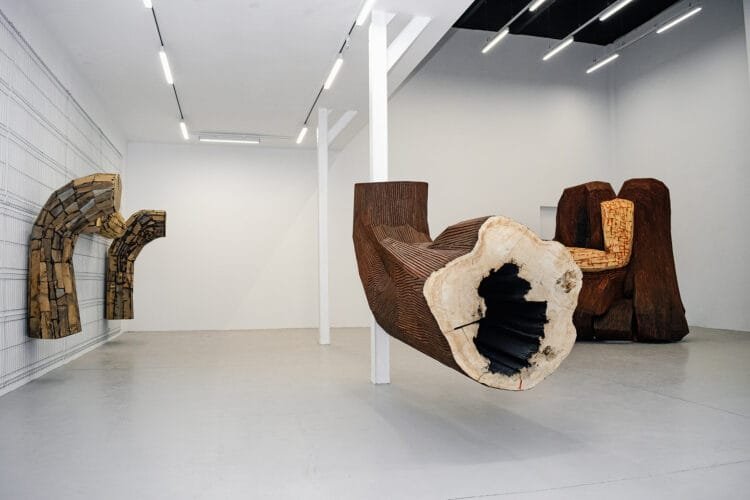
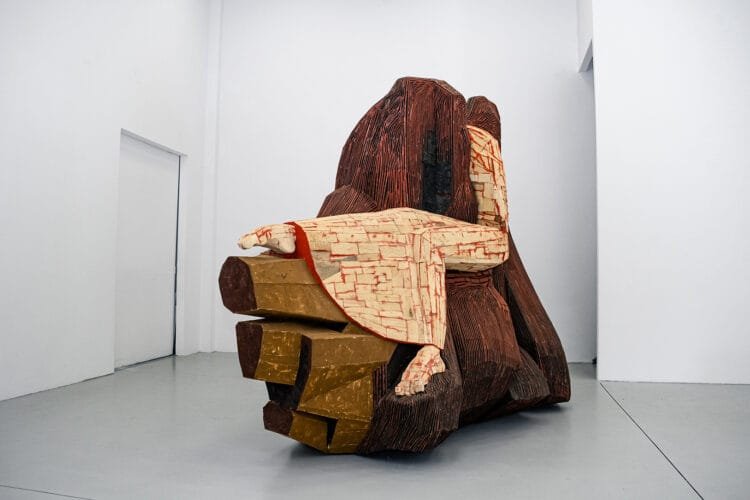
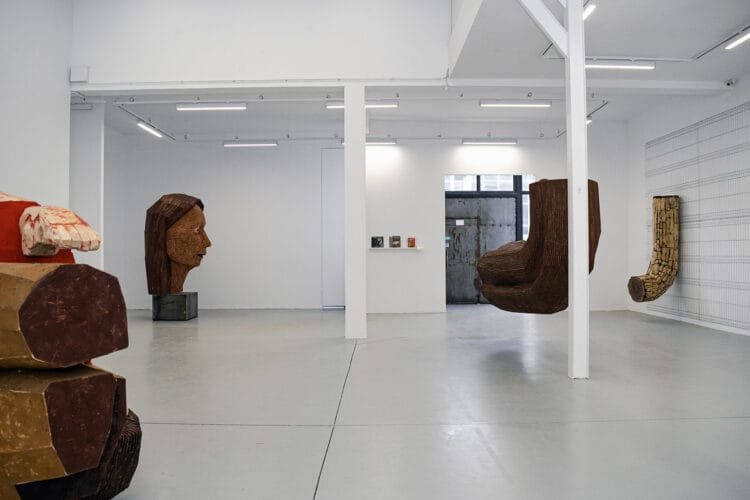
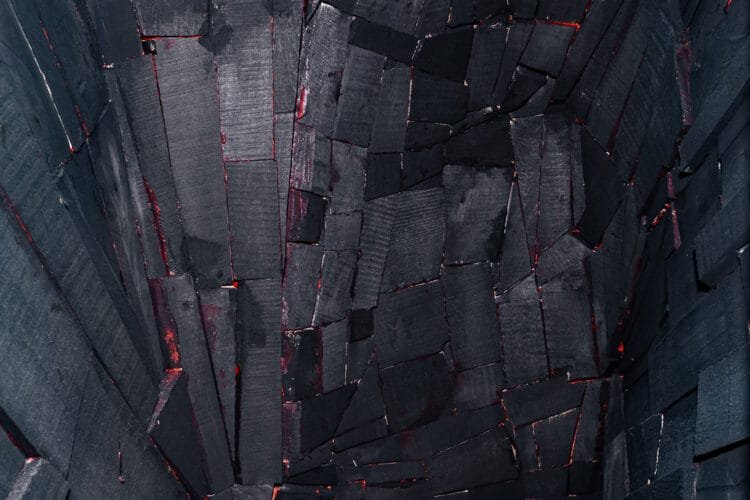
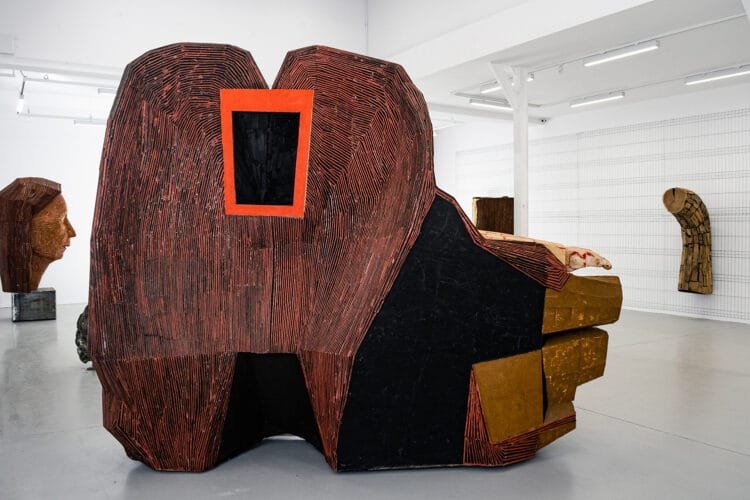
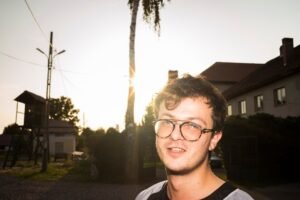
Comments are closed here.